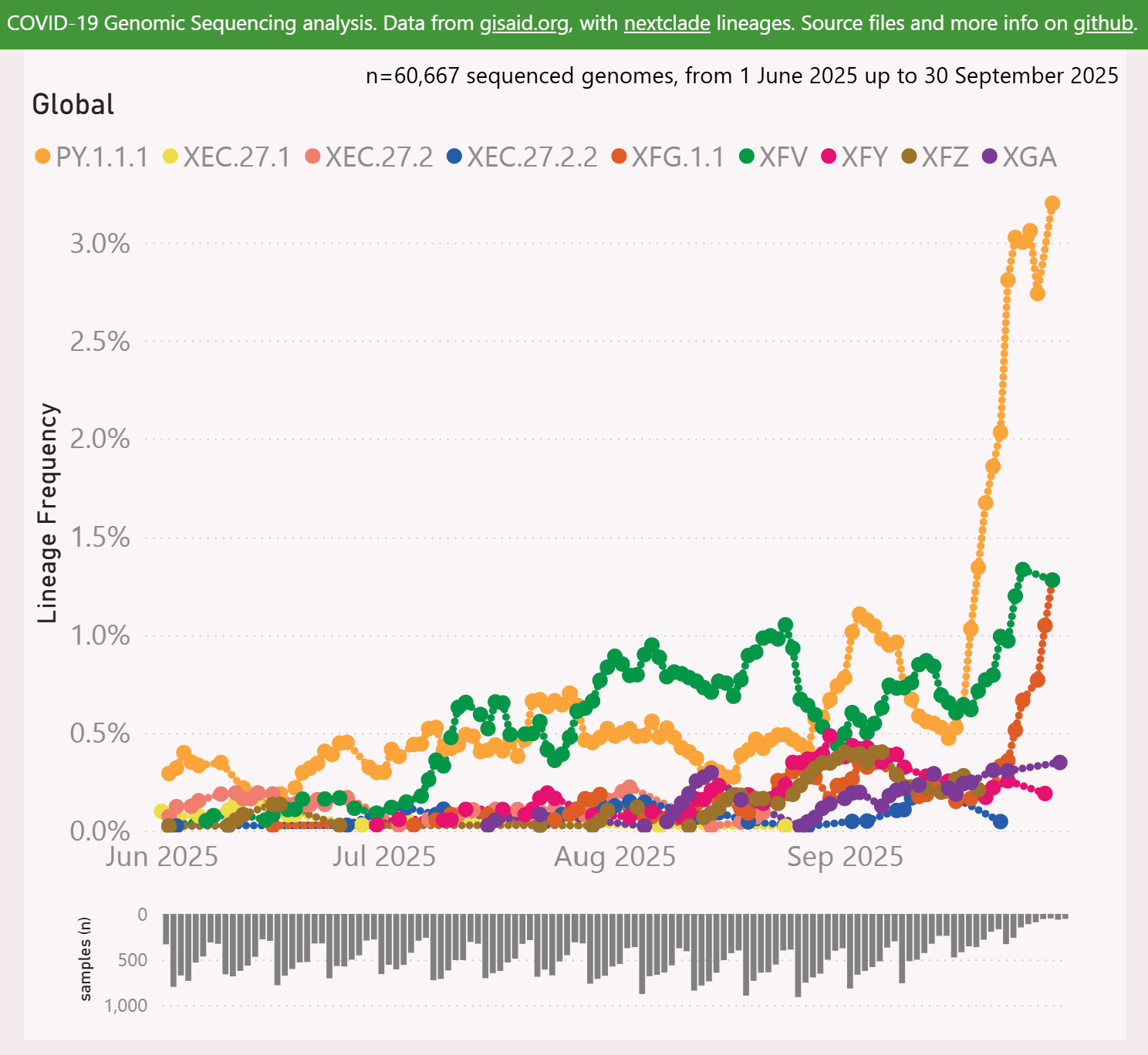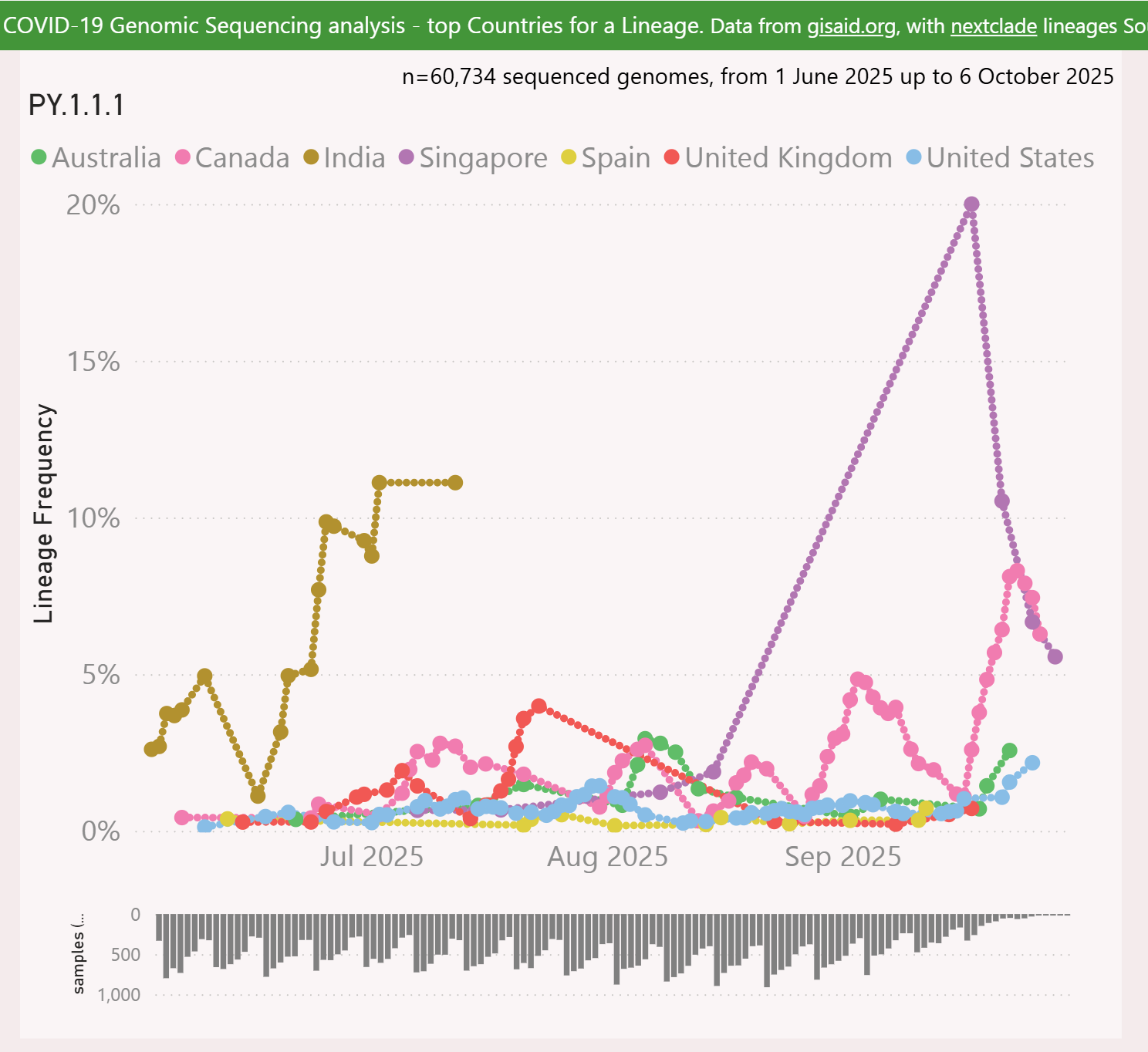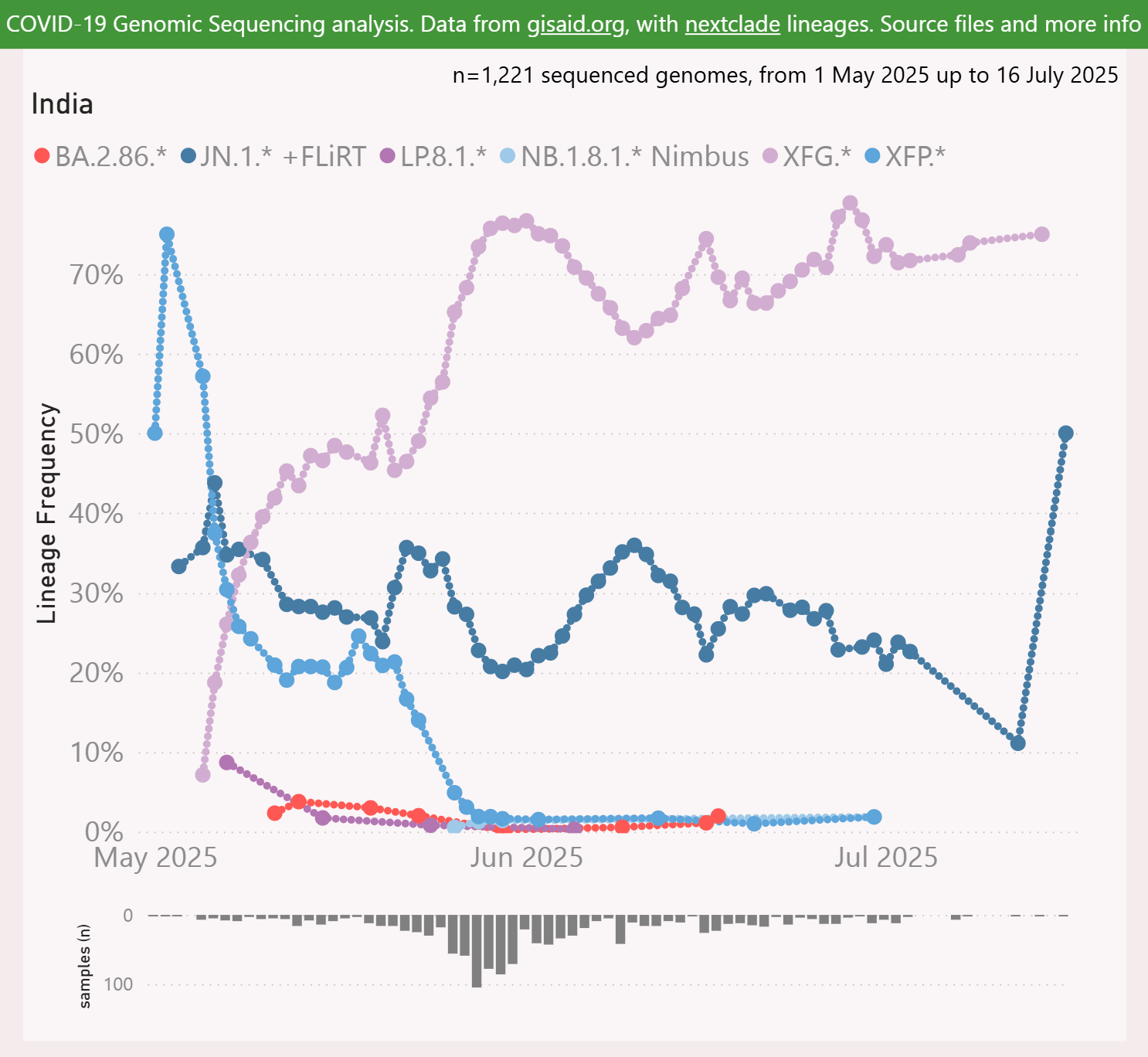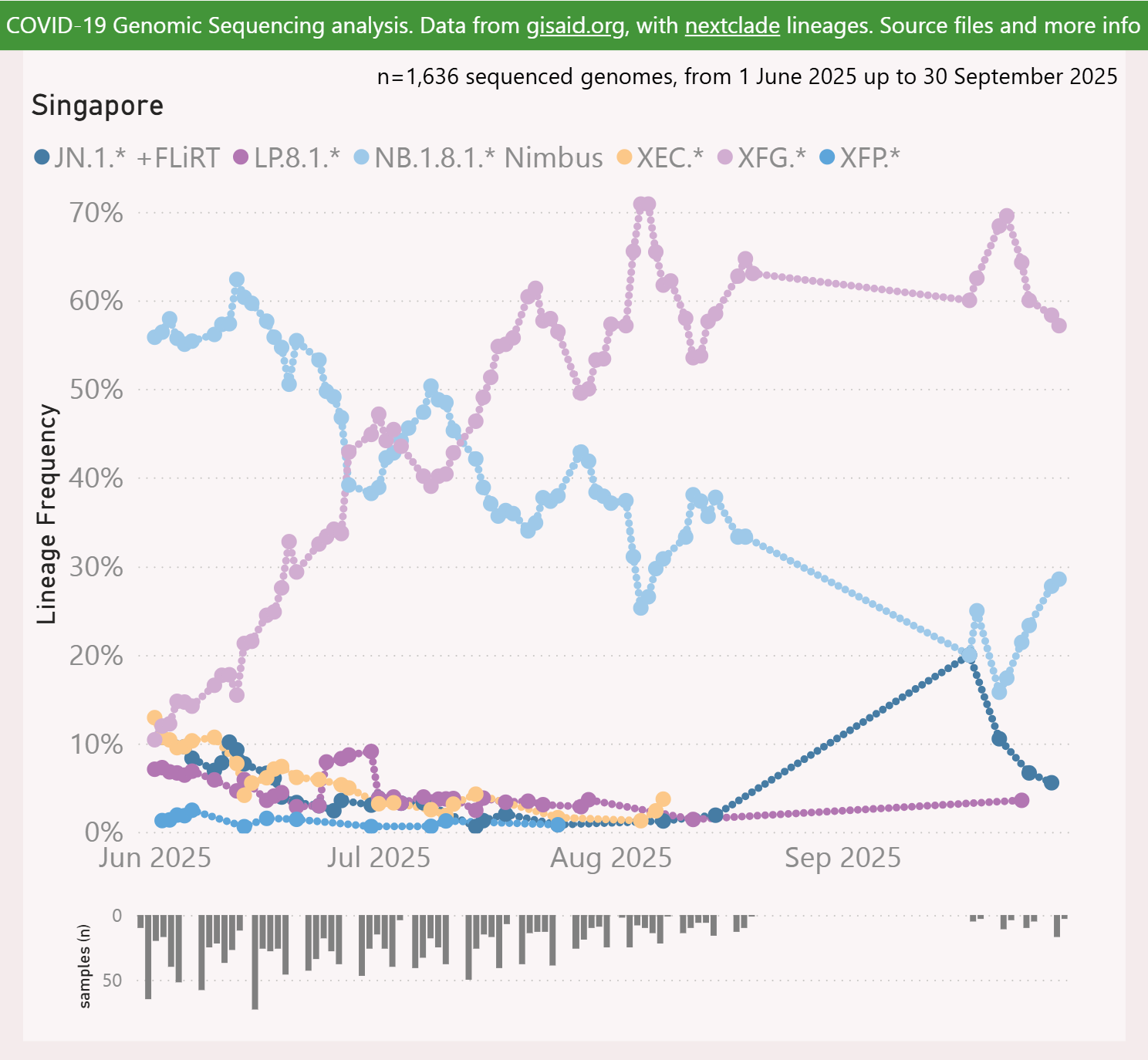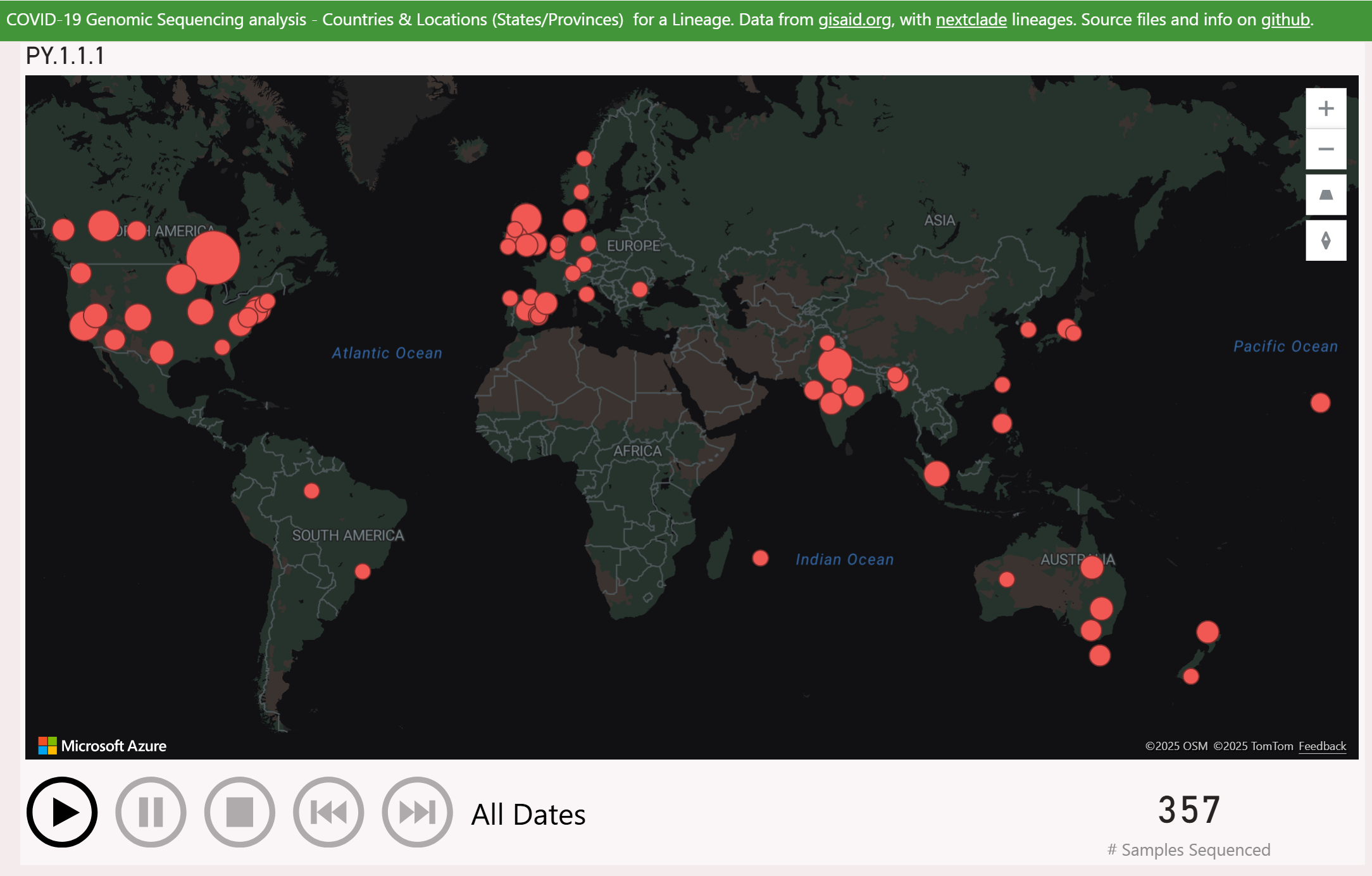With the NB.1.8.1.* "Nimbus" and XFG.* "Stratus" variants carving up dominance around the globe, it is time to ponder which variant might drive the next wave.
The leading contender at this point is PY.1.1.1. It is still at a low frequency in the global view, but is already widespread geographically and showing strong recent growth.
XFG.1.1 is showing strong recent growth.
I added some other contenders for monitoring, although they don’t seem significant so far: XEC.27.2.*, XFV, XFW, XFZ and XGA.
